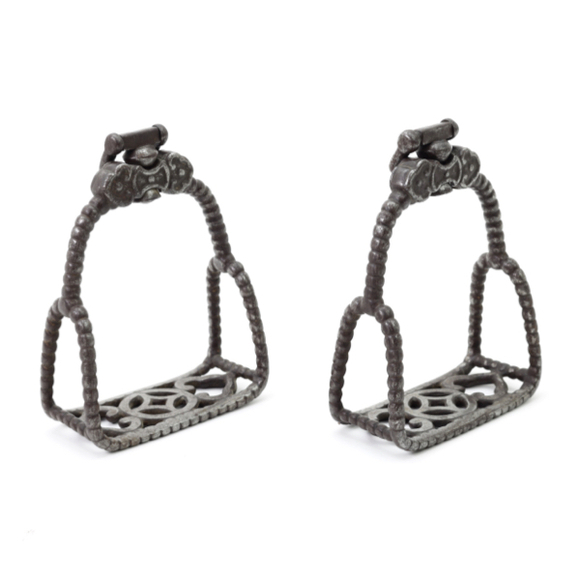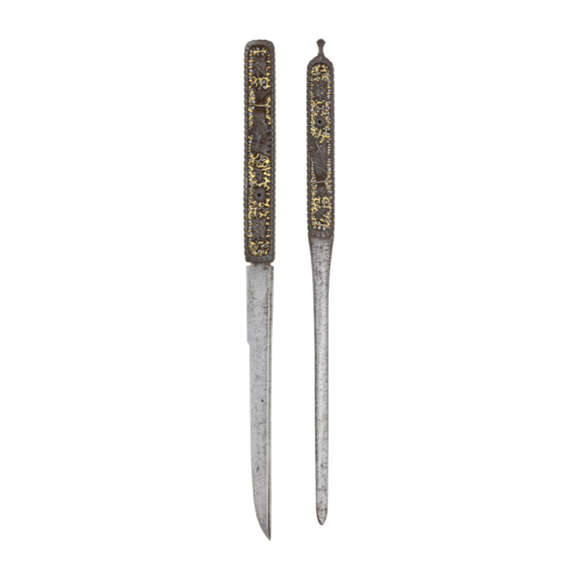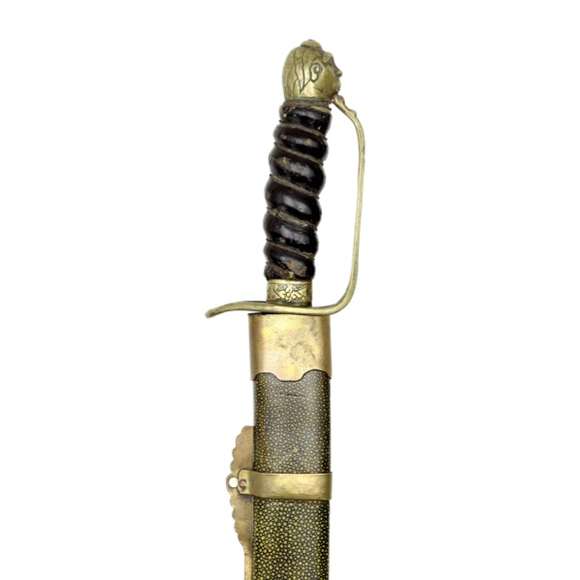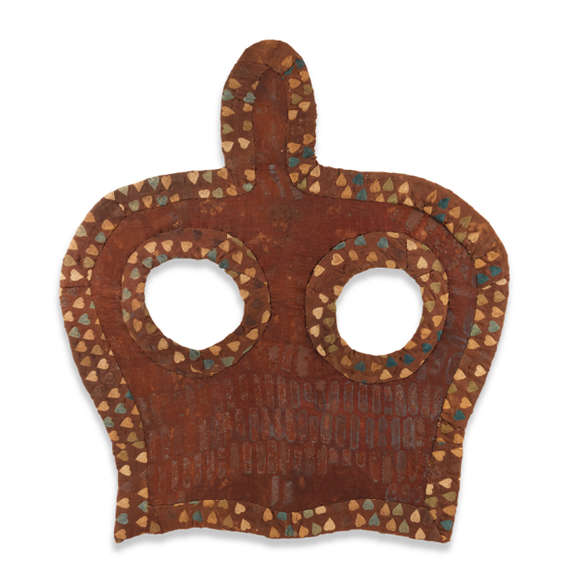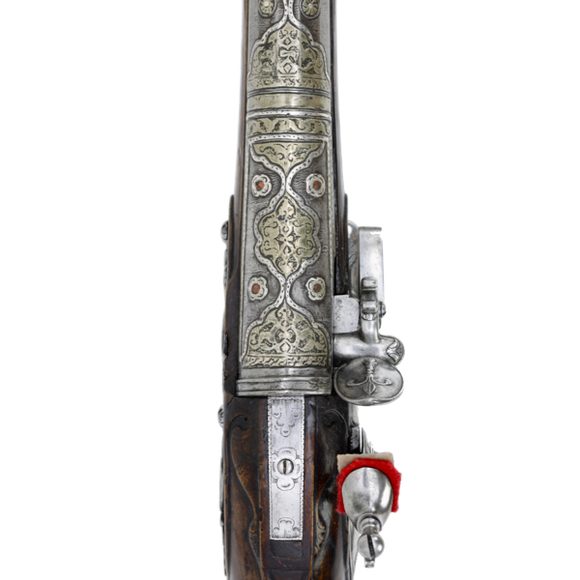Forged iron, swiveled stirrups with an entirely beaded frame and openwork platforms.

85.9 cm
66.6 cm
Base 6 mm
Middle 6.7 mm
5 cm from tip 4.7 mm
Base 45.8 mm
Middle 39 mm
5 cm from tip 30 mm
1126 grams
20 cm from hilt side of guard
Iron, steel
China
Early 17th century
From an American private collection
Introduction
The Chinese straightsword, or jiàn was primarily associated with the upper class. However, among antiques, we occasionally find unpretentious, simple fighting jiàn such as this one.
China was vast, and rural villages often could not rely on the state army for protection. Their answer was a system of local militias called tuánliàn (團練), "assemble and practice." These militias consisted of able-bodied men who were to gather and practice regularly to prepare them for the defense of their village.1
The organization and leadership over these militias was often in the hands of the local gentry, the literary elite whose sword was the jiàn. This explains why in times of great social upheaval in China, like the rise and fall of dynasties, large numbers of practical fighting jiàn were produced for militia trained by jiàn wielders and not military saber instructors.
The Sāncái Túhuì of 1607 states:
"Recently, frontier officials beg for the manufacture of a short-bodied jiàn that [offer] substantial protection." 2
Notes to introduction
1. For a thorough introduction to these militia systems, see Philip A. Khun, Rebellion and its Enemies in Late Imperial China, Rainbow Bridge Book Co, 1970.
2. The Sāncái Túhuì (三才圖會) was an illustrated encyclopedia compiled by Wang Qi (王圻) and his son Wang Siyi (王思义). It was completed in 1607 and published in 1610. Also see: Di Cosmo, Nicola; Military Culture in Imperial China, Harvard University Press, Cambridge Massachusetts, and London, England, 2009. Page 233.
This example
A good and rather large example of a Chinese militia jiàn. Its blade shows considerable taper in width, combined with relatively little taper in thickness: these are traits of the late Ming jiàn. The blade is patinated a deep black but in its current state still shows signs of a straight-grain forging. It is very healthy for a blade of this age, with no signs of excessive grinding, no edge cracks, or significant nicks.
The guard is forged onto the blade's tang and the pommel is integrated into the tang's end, as is common on these relatively simple but effective militia swords. The placement of the lanyard hole in the pommel is again a typical Ming design feature. During the Qing, this lanyard was moved up into the back portion of the grip.
I find it has a pleasantly heavy feel to the hand, with a saber-like capability of heavy slashes combined with the point-and-thrust efficiency of the jiàn.
Conclusion
Overall an impressive example of a large militia jiàn of the Ming-Qing transition period. It is in very good condition for one of these with a very healthy blade. It is also quite a bit larger than normal, as the majority tend to be heavy duǎnjiàn. A very rare find, especially in this condition.















The only set of its type known to me in both private and museum collections.
A standard pattern Qing military saber, but with the rare addition of a label in Manchu.
Silk horse mask from the Xianbei ruled dynasty which ruled northern China from 386 to 534 A.D.

